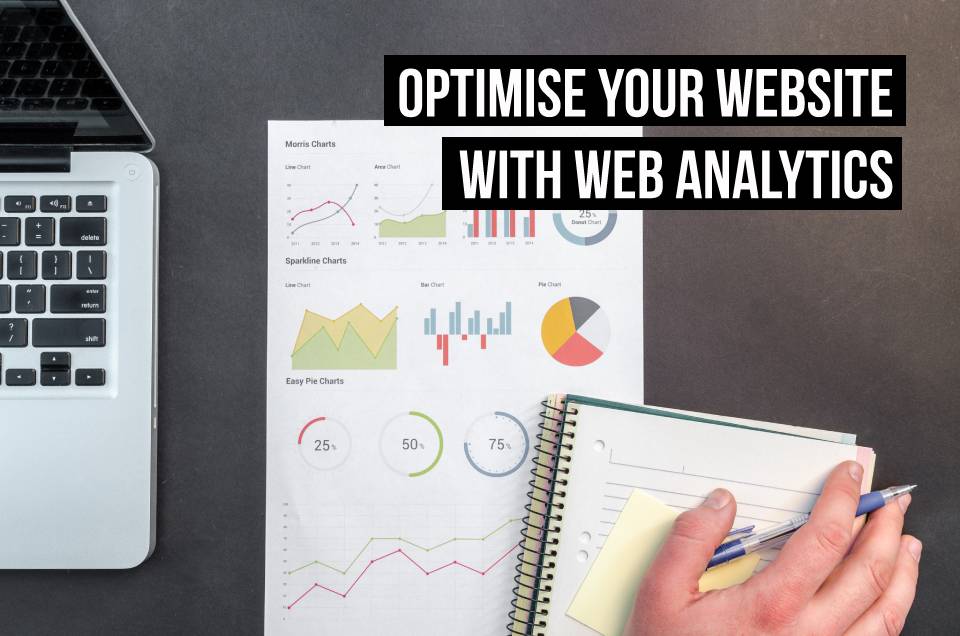The basics of web analytics
Working as a freelancer, sole trader, or small business today, it’s not uncommon to manage a website. In order to better understand traffic to your website and potentially increase it, web analytics offers a number of tools that can be useful for your business.
Web analytics involves the collection, measurement, and evaluation of data gathered from a website with the purpose of gaining a better understanding of traffic and visitor behaviour on that particular site. This information is then used to determine how to better optimise the website to promote the business to customers online.

There are two types of web analytics: quantitative and qualitative. Quantitative, as the name implies, deals specifically with the numbers involved in visits to the website in question.
Qualitative addresses the behaviour of those visitors. This means that it provides information regarding when and how often visitors click on a particular page/button/tab etc., how long they spend on the page, and whether they follow links to another page.
Why web analytics is important
While is might seem obvious why this kind of information can be significant for a business, being able to understand and use web analytics to improve your website can also lead to valuable insights into your business and customer base.
In addition to basic demographics such as age, gender, and location, web analytics can provide you with a variety of other information that can be crucial to better understanding visitors to your page and how to turn these visitors into customers.
For example, do you know where most of the traffic to your website comes from? Web analytics can help you determine whether it’s through good SEO strategy making your site top of the search engines, whether it’s through a link on a popular blog somewhere, or whether people come directly to your page through referrals.
Web analytics also gives you the tools to see which pages are performing better than others. Let’s say that your homepage is not the top performer on your site as far as converting visitors to customers. Analytics let you know which page is converting best, allowing you to better understand what is working and where other pages can be improved.
Web analytics methods
When it comes to improving the quantity and quality of visitors to your website, it’s important to get started with a basic strategy in order to make the most of the information that you gain from the web analytics tools available.
In other words, you should have a plan. Ask yourself: What exactly do you aim to measure and why is it important? How can you start putting the measurement into action and gather data? How will you collect and check the data? Do you have what you need to properly interpret the data? What will you do if there is data that indicates something can be improved?
To begin planning the analysis, a useful framework is known as the SMART technique (Specific, Measurable, Achievable, Relevant, Timely). In other words, it helps you to establish clear objectives and how you can reasonably obtain and understand those objectives to reach your desired outcome.
Web analytics tools
Today, there are many different online tools available to help you get started with web analytics, so it’s important that you find an option that best fits your business and your goals. Once you can define the aims of your website and what you hope to accomplish, you’ll be better prepared to find the right tool for your business.
Take into account what in particular you want to focus on: is it purely numbers? Or are you more interested in visitor location? Perhaps you want to see whether certain pages could contribute more to sales?
Other factors that you should take into consideration include the accuracy and the volume of data you need to determine certain factors, and also, inevitably, price. Due to the range of tools, you can find some from free up to hundreds of pounds per month.
Quantitative web analytics tools include:
Qualitative web analytics tools include:
Google Analytics and your business
Arguably, Google is the most recognisable name on the above list. Google is undoubtedly a powerhouse and offers tools useful to many businesses for free with a quick and easy installation.
Installing Google analytics on your website requires entering a simple Tracking ID code on to instantly begin tracking traffic data that Google then allows you to view an analyse. Learn more on getting started with Google analytics.

Web analytics tips for freelancers, sole traders, and small businesses
Using a web analytics tools puts useful information at your fingertips and empowers you to better understand your audience and current and potential customer base. Once you begin using your tool of choice, gather the data, and are ready to take action to make improvements, you essentially have two options:
Use the data to develop a more specific customer profile with interest in your product/service, then update the website to cater to the needs of this profile
Focus on the majority and make adjustments based on a general visitor profile to appeal to a broader audience
You are choosing either to focus on a niche market by narrowing down a particular customer profile based on visitor data gathered, or to keep the website more general in hopes of reaching customers of a greater variety.
Determining what is best for your business can make a difference in simply visitors to your website and visitors that then become customers. Today, a business website can make a big difference in marketing and a company’s bottom line, so understanding your industry and customer base can make not only your website but also your business more competitive.
Keep in mind that making improvements to your website doesn’t need to mean expensive or more complicated features. As you better understand your visitors, you can better grow your website and move on to more complex web analytics tools and website updates.
